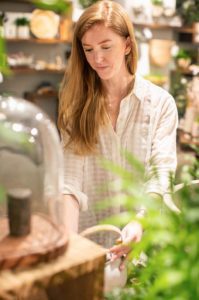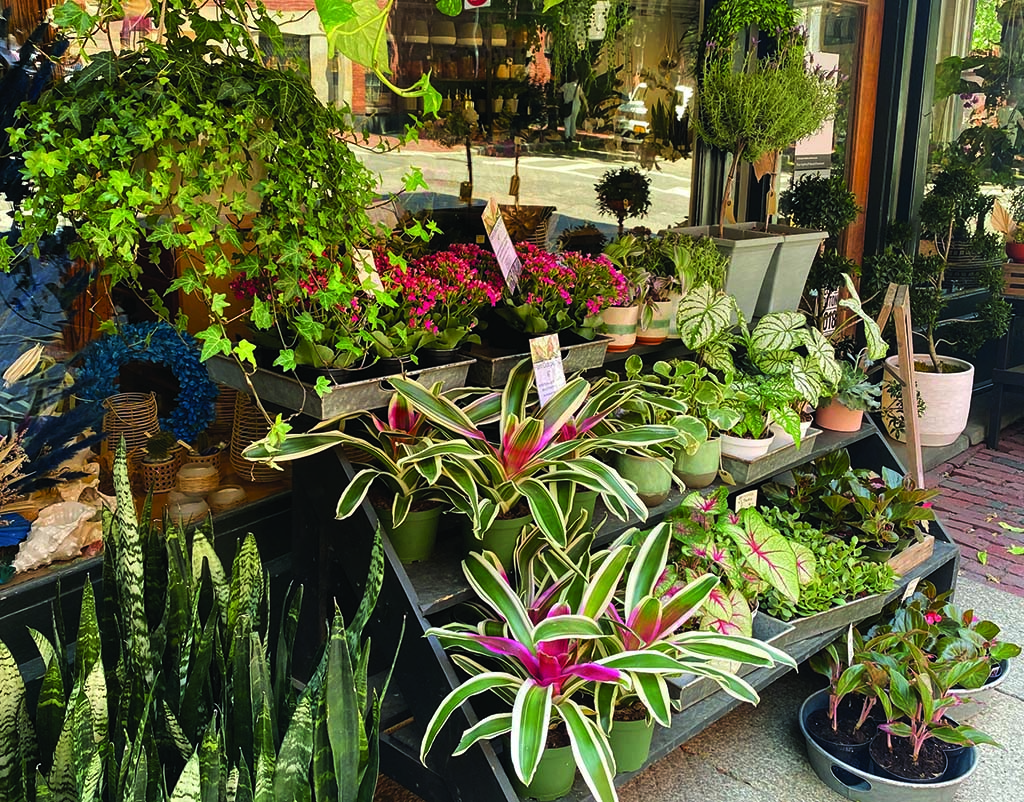
Becky Hillis, director of visual merchandising at Accent Decor
Designing your shop’s displays takes time, creativity and inspiration. Becky Hillis, director of visual merchandising at Accent Decor, tackles displays for the company’s 10,000-square-foot showroom in Norcross, Georgia. With a love of plants, design and creating spaces, the position is a perfect fit for Hillis, who has been with the company for four years.
“The top challenge I face is trying to be better every season creating displays that keep customers surprised, inspired and delighted,” she says. To refine their merchandising efforts, Hillis and her team are always asking several questions: “How can we top what we did before? How can we create a similar but better experience? How can we get customers engaged when they walk in the door?”
Hillis, who is featured in the latest issue of Floral Management, offered these tips that help her create dazzling displays year after year.
Rely on Risers
“Risers are your best friend. It’s one thing that helps us a lot in the showroom and something we can’t work without,” Hillis says. “Risers help highlight a product and guide the eye to move through a space and rest on certain objects.”
Incorporating risers into your displays introduces a dynamic element and ultimately helps you fit more product on a table. Choose risers that contrast with the objects on display. For instance, a wooden stand lets glass or ceramic items shine.
Arrange Colors Carefully
Hillis has a favorite saying when it comes to color in displays: “When in doubt, color it out.” For instance, in an autumn display there may be an array of bold jewel tones. Designing displays with the colors all mixed together creates chaos.
“But if you sort the colors and keep the golds in one area, reds in another and so on, that helps the customer to focus,” Hillis says. “It’s restful for the eyes. Creating rest and focus is the most important thing we can do to help tell the story we’re trying to tell.”
Avoid Missed Opportunities
“One thing that makes a big difference in merchandising is using really beautiful and interesting fixtures,” Hillis says. “By fixture I mean an interesting table, like something with personality you found in an antique shop. What the product is sitting on is just as important as the product itself. It can take away or highlight and elevate that item.”
Hillis suggests being very intentional with the fixtures you’re using with your products. “Fixtures can set your business apart and help you hone in on the trend you want to create, whether it’s homeyness or an ultra-modern, clean look,” she says. “It really helps elevate the setting of the shop.”
Try a 3D Modeling Tool
Hillis likes to use SketchUp, a free online platform that’s helpful when thinking about the layout of a showroom or store. “You can scale, build walls, insert shelving and feel like you’re in the space without physically being there,” she says. “It’s intuitive and easy to use. I find it incredibly helpful when building out a space.”
To learn more about Hillis, read the Talent column in the September/October issue of Floral Management.
Julie Marten Forneys is a contributing writer for the Society of American Florists.






